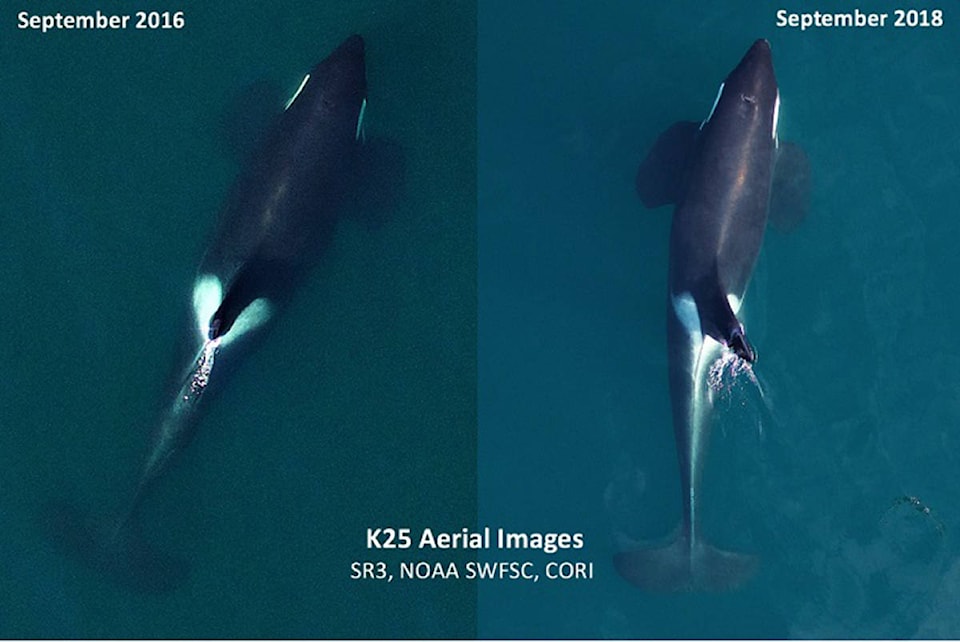Another southern resident killer whale is showing signs it may be sick, just one month after the struggling population that favours the B.C. coast lost one of its youngest female members known as J50.
In a statement online Wednesday, the Seattle-based National Oceanic and Atmospheric Administration said a 27-year-old male known as K25 was recently spotted in aerial photographs in “notably poorer body condition.”
K25 is one of 74 remaining southern resident orcas in the world, and has been surveyed by NOAA since 2008. Three pods are known to swim along the B.C. coast, specifically near Vancouver Island, and into California.
The southern resident population has been a focal point for researchers and British Columbians alike in recent months, after a female, J35, swam while carrying her dead calf for 17 days in a unique grieving ritual.
Researchers on both sides of the border also recently worked around the clock to save a three-year-old orca known as J50. She died earlier this month after battling parasitic worms and “peanut-head syndrome,” where her head was smaller than her body, believed to be due to malnourishment.
Researchers with NOAA now suspect K25’s weight loss might be due to the death of his mother, K13, last year, making him vulnerable. Male whales rely on their mothers and other family members to help them hunt for food and meet their increased energy demands.
“While the decline in K25’s body condition is not as severe as we saw with J50 this summer, it is a warning signal,” said Lynne Barre, recovery coordinator for NOAA.
Pregnant whales leave scientists hopeful
After the two deaths of J50 and J35’s calf, scientists have cause for a more hopeful outlook for the dwindling population: a number of pregnant whales.
“The aerial photos … indicate that at least one whale in each pod is pregnant. This is vital news for this critically endangered population,” said Scott Rumsey, NOAA fisheries west coast region deputy regional administrator.
Scientists confirmed K25’s sister, K27, is “heavily pregnant,” just years after being spotted aborting a fetus.
“Whales carry their baby weight below the rib cage, just like humans, enabling later-term pregnancies to be reliably documented from aerial images of body shape,” the NOAA said.
The organization said while these developments could be good news, these orcas currently have a “high rate of reproductive failure,” with only three births in 10 years.
The Center for Whale Research will be monitoring the pregnancies. In the meantime, the organization is reminding anglers and others on the water that federal regulations limit the viewing distance for killer whales to no less than 200 metres in Canadian waters.
“We ask that vessels minimize disturbance of these pregnant whales, in addition to K25, to maximize the chances of successful pregnancies,” Rumsey said.
@ashwadhwani
ashley.wadhwani@bpdigital.ca
Like us on Facebook and follow us on Twitter.
